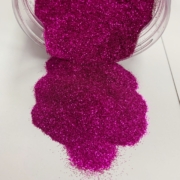Commission Regulation (EU) 2023/2055 – Update on Restriction of Glitter
Since 17 October 2023, the EU will enforce a new regulation to restrict the use of intentionally added microplastics – tiny synthetic polymer particles that are either used alone or mixed with other substances. The commission is working on a Q&A document that will clarify the details of this regulation, which is expected to be published by the end of 2023. In the meantime, the commission has provided some updated information and answers on the microplastics regulation on 16th October 2023.
The restrictions of Glitter
Glitter is not banned completely, but it depends on what it is made of, what it is used for and how it is shaped.
Only plastic glitter that does not break down or dissolve in water is restricted.
Plastic glitter that is loose and used for arts and crafts cannot be sold from 17th October unless it can break down or dissolve in water.
Plastic glitter that is attached to decorative items like Christmas decorations is also not allowed if it comes off easily.
Plastic glitter that is stuck in a solid material like glue, paint or ink, or inside solid items like jewellery or snow globes is permitted.
The main rule is:
In case of glittered articles for which the decorative function is secondary – such as textiles used for garments or footwear, glitter is always regarded as an integral part of the article. These glittered articles – eg: clothing, shoes, curtains – are out of the scope of the restriction.
For glittered articles having a purely decorative function, or for which the decorative function is the main function of the article – such as textiles used in certain art and craft kits, toy/party hats, Christmas decorations, etc. – glitter can only be regarded as an integral part of the article if it does not detach from the article during normal end use (including storage). In case glitter detaches from the article during normal end use, the glittered article is to be regarded as a combination of an article (e.g. the article without the glitter) and a mixture (the glitter). In the latter case, the ban applies to the glitter (but in practice, the whole glittered article cannot be sold).
The sale ban would apply as of 17 October 2023 only to glittered objects having mainly a decorative function (such as – but not limited to – Christmas decorations and party hats) from which glitter detaches during normal end use.
At this stage the Commission is not in a position to recommend a standard test to prove whether glitter detaches during normal end use.
What is your test biodegradability ?
In permitted tests, such as OECD 301 Readily Biodegradability test, our biodgradable glitter products achieve >60% within 28 days (>60% is required to pass in 28-60days).
Link to the regulation: EU 2023/2055
Link to the latest guidance: Commission Regulation (EU) 2023/2055 – Restriction of microplastics intentionally added to products

